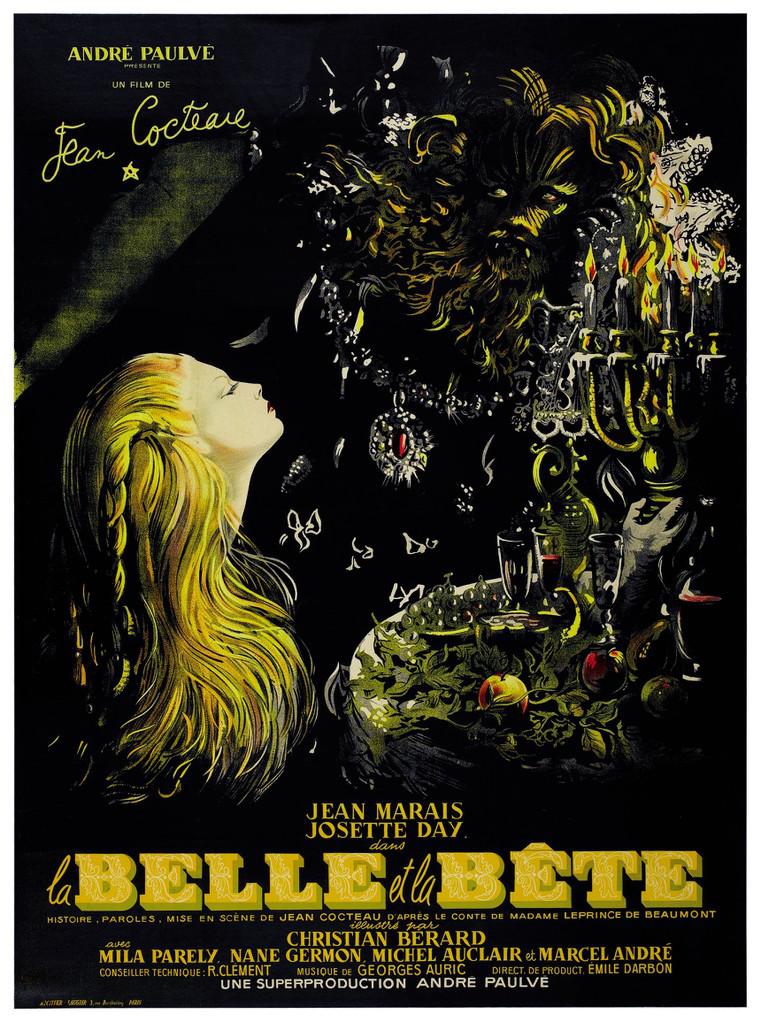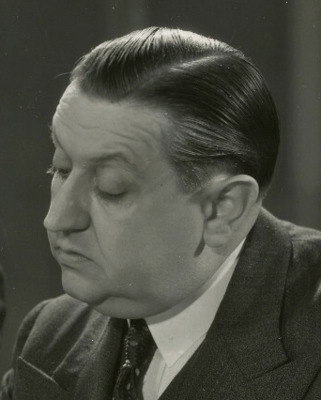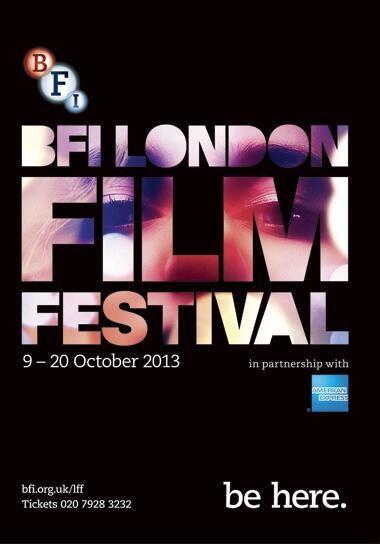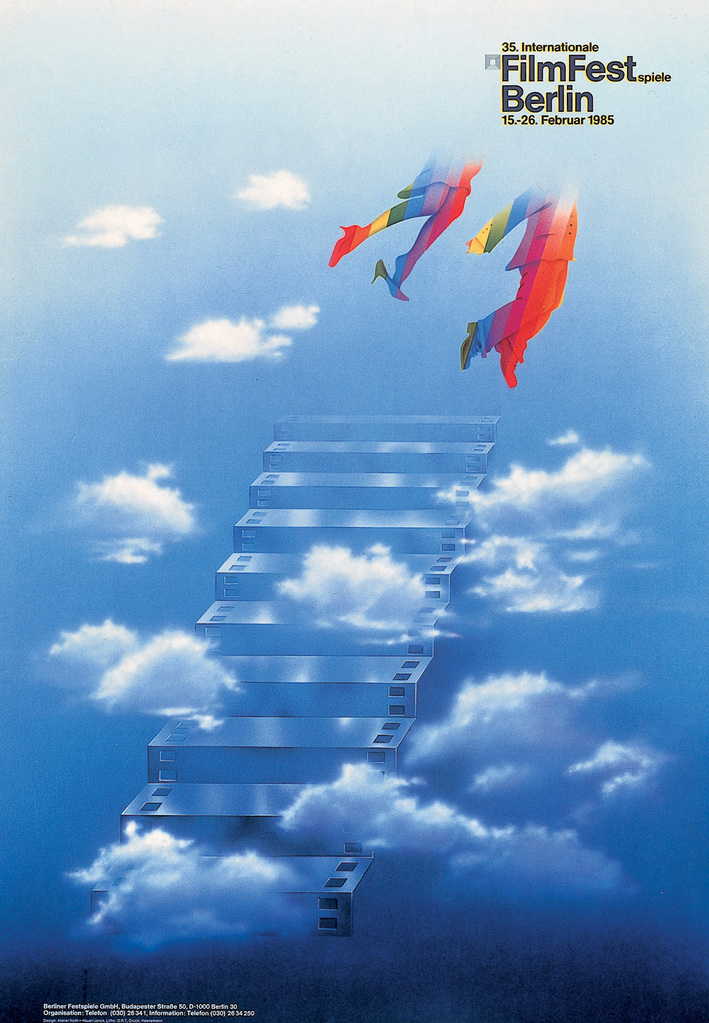あらすじ
昔、年老いた商人がいた。末娘のベルは美しく優しい娘で、いつも意地悪の二人の姉にいじめられていた。彼女は腕白な兄の友達アヴナンから求婚されていた が、父の世話をするために拒んでいた。父は自分の船が沈んだので破産を覚悟していたが、その一せきが無事入港したと聞いて喜んだ。二人の姉は宝石や衣しょ うをお土産にねだったが、ベルは唯バラの花が欲しいといった。父が港に着いてみると船は債権者に押収されてしまい止むなく夜道を馬に乗って帰って来る途 中、何時の間にか道を踏み迷ってこれまで見たことも聞いたこともない荒れ果てた古城に行き当った。人影もなく静まり返った場内の異様な恐しさに逃げ出して 庭に出るとそこには香しいバラの花が咲き誇っていた。ベルのことを想い出してその花を一輪手折った時、突如眼前に一個の怪物が現われて立ちふさがった。形 は人間だが全身に毛がそそり立ち、物すごい形相をして彼をにらんでいる。野獣はこの古城の主であった。大切なバラを盗んだ罰に命をもらうといったが、もし 娘の一人を身代りによこせば一命を助けてやると約束し父を魔法の馬に乗せて帰した。ベルはこの話を聞いて責任を感じ父の生命を助けるために白馬に乗って単 身野獣の居城へおもむいた。野獣は醜怪なその容ぼうにもかかわらず優しく堂々たる言葉で毎夜七時に食事の時だけ会いたい。そして「私の妻になっておくれ」 と問います、といったがベルは「いやです」と答えた。美女と野獣の生活はこうして始まったが、ベルは次第に野獣のやさしい心に幸福な自分を見出すように なって来た。会いたい人の顔をみられる魔法の鏡でベルが父の顔を見ると、父は心労のため病床にふし、家財はみんな差押えられていた。父想いのベルは野獣に 一週間の約束で家へ帰ることとなり、野獣は信頼の形として宝庫ダイアナ亭の金の鍵と、何処にでも行ける手袋を与え、一週間経って帰って来なければ自分は心 労のために死ぬであろうというベルが家に帰ると父は急に元気になったが、二人の姉妹のせん望と、ベルを思うアヴナンの野望とが一緒になってベルの金のかぎ を奪い、兄とアヴナンは野獣を退治して宝物を奪う計画を樹てた。ベルのお迎えにに来た白馬に乗って城に着いた兄とアヴナンはまづダイア亭の宝物をねらっ た。一方、ベルは魔法の鏡で野獣をみるとベルを慕う余り苦もんする野獣の姿を見出して、直ちに魔法の手袋をはめて野獣のもとへ行くと彼は正にもん絶せんと するところであった。アヴナンは亭の屋根を破り、中へ潜入しようとした途端、傍に立っていた彫像ダイアナがその手にもつ弓をやをら持ち上げて放った矢に、 背を射抜かれ、突如野獣に変身してしまった。あたかもその時ベルの介抱にもかかわらずついにもん絶したと思った野獣の姿はかき消すように消えて、こつ然と 輝くばかりの美しい王子が現われた、それはアヴナンによく似た王子だった。王子は長い間魔法使いのために野獣にされていたが、今、ベルの愛のひとみは元の 姿に帰れたと語り、あなたは私の妃だといってベルを擁し、雲の上をはるか王子の城へと飛んでいった。
Source : movie.goo.ne.jp
クレジット
監督 (1)
俳優 (10)
クレジットタイトル詳細 (17)
- 製作代表 : André Paulvé
- Adaptation : Jean Cocteau
- シナリオライター : Jean Cocteau
- せりふ作者 : Jean Cocteau
- フォトディレクター : Henri Alekan
- 作曲家 : Georges Auric
- 監督補佐 : René Clément
- 編集担当 : Claude Ibéria
- Sound recordists : Jacques Carrère, Jacques Lebreton
- Costume designers : Marcel Escoffier, Pierre Cardin, Christian Bérard
- あてレコ : Jean Cocteau
- Camera operators : Robert Foucard, Raymond Letouzey, Henri Tiquet
- 製作部長 : Emile Darbon
- スクリプト : Lucile Costa
- Production Designers : René Moulaert, Lucien Carré, Christian Bérard
- ミュージシャン : Roger Desormière
この映画を見る
Watch 美女と野獣 in VOD
| Platforms | Model | Price | Quality |
|---|
Sorry, your search returned no results.
| Platforms | Model | Price | Quality |
|---|
Sorry, your search returned no results.
| Platforms | Model | Price | Quality |
|---|
Sorry, your search returned no results.
| Platforms | Model | Price | Quality |
|---|
Sorry, your search returned no results.
技術面詳細
- タイプ : 長編映画
- ジャンル : フィクション
- サブジャンル : 怪奇, 文学作品翻案
- テーマ : 愛
- 言語 : フランス語
- その他の国の共同制作者 : フランス (100.0%)
- Original French-language productions : はい
- 製作国 : 100%フランス (フランス)
- 製作年 : 1946
- フランス公開 : 29/10/1946
- 上映時間 : 1 時間 26 分
- 経過状況 : 公開済み
- ニュメロ·デ Visa : 782
- ビザ発行日 : 05/06/1945
- CNC助成 : はい
- 生産のフォーマット : 35ミリ
- カラータイプ : 白黒
- 画面セット : 1.37
- Audio format : モノラル
興行収入・公開作品
興行収入
このコンテンツは登録ユーザー専用です。
会員登録はお済みですか?コンテンツを見るにはログインしてください。
International releases
| 国 | 映画配給会社 | バイヤー | 劇場公開日 | Titre local |
|---|
Sorry, your search returned no results.
テレビ放送
このコンテンツは登録ユーザー専用です。
会員登録はお済みですか?コンテンツを見るにはログインしてください。
ニュース&アワード
映画祭でのセレクション (9)
受賞 (1)
About
Beauty and the Beast (French: La Belle et la Bête) is a 1946 French romantic fantasy film adaptation of two French fairy tales. The first fairy tale, from which the film took both its title and most of its content, was written by Jeanne-Marie Le Prince de Beaumont and published in 1757 as part of a fairy tale-anthology (French: Le Magasin des Enfants, ou Dialogues entre une sage gouvernante et ses élèves, London 1757). From the second fairy tale, (French: La Chatte Blanche) by Marie-Cathérine d'Aulnoy, published almost sixty years previously in one of the earliest fairy tale anthologies of France, (French: Les Contes des Fées, Paris 1697-1698), only a single but very evocative narrative motive was taken: servants, previously magically reduced to their arms and hands, with these still performing all servants' chores.
Directed by French poet and filmmaker Jean Cocteau, the film stars Josette Day as Belle and Jean Marais as Avenant and The Beast and Prince Ardent. It is widely considered one of the finest fantasy films of all time.
The plot of Cocteau's film revolves around Belle's father who is sentenced to death for picking a rose from Beast's garden. Belle offers to go back to the Beast in her father's place. Beast falls in love with her and proposes marriage on a nightly basis which she refuses. Belle eventually becomes more drawn to Beast, who tests her by letting her return home to her family telling her that if she doesn't return to him within a week, he will die of grief.
This film version of La Belle et la Bete adds a subplot involving Belle's suitor Avenant, who schemes along with Belle's brother and sisters to journey to Beast's castle to kill him and capture his riches while the sisters work to delay Belle's return to the castle. When Avenant enters the magic pavilion which is the source of Beast's power, he is struck by an arrow fired by a guardian statue of the Roman goddess Diana, which transforms Avenant into Beast as Belle declares her love for the Beast and reverses the original Beast's curse. When the Beast comes back to life and becomes human at the end, he transforms into a Prince Charming with Avenant's handsome features, but without his oafish personality.
In the original tale, Belle has three brothers, whereas in the film, she only has one. Also in the original tale, Belle and her family are forced to move to a farmstead in the countryside after the loss of their fortune; in the film, they continue to live in their townhouse. Also in the original tale, the sisters are turned into statues as punishment for their cruelty, whereas in the film, they are merely forced to carry the train of Belle's gown at her wedding, though it is implied that they will now be her servants.
Jean Marais originally suggested to Cocteau for the beast to have a stag's head, obviously remembering a detail in the fairy tale (French: La Chatte blanche): The knocker at the gate to the castle of the princess/The White Cat has the form of a roe's foot. While this suggestion followed the narrative lines of its fairy tale origin and would have evoked the mythical echo of Cernunnos, the celtic stag-headed god of the woods, Marais' idea was nonetheless refused by Cocteau who feared that in the eyes of modern cinema audiences a stag's head would turn the beast into a laughing-stock.
The score was composed by Georges Auric, and the cinematography by Henri Alekan. Christian Bérard and Lucien Carré covered production design. The exteriors were shot in Rochecorbon (Indre-et-Loire).
The film is notable for its surreal quality and its ability to use existing movie technology to effectively evoke a feeling of magic and enchantment. The set designs and cinematography were intended to evoke the illustrations and engravings of Gustave Doré and, in the farmhouse scenes, the paintings of Jan Vermeer.
Source : Wikipedia






































































